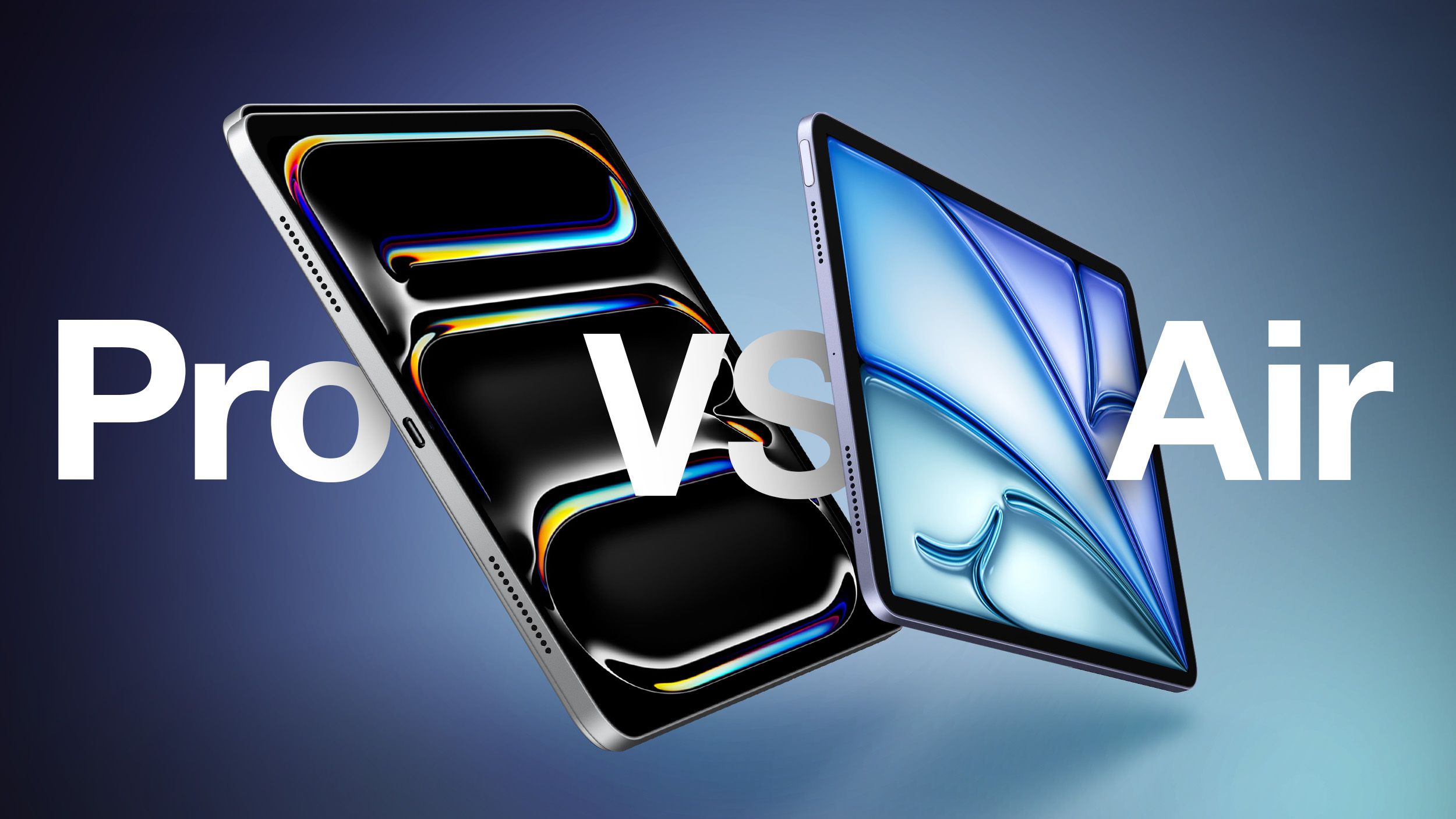The iPad Air now comes in two size options, just like the iPad Pro. But after a significant update to the iPad Pro that introduces a slimmer design and OLED displays, how different are the two product lines, and which should you buy?
The introduction of the fourth-generation iPad Air in September 2020 brought the device much closer to the iPad Pro in terms of design, and with the latest model, the iPad Air received the same M2 chip and Apple Pencil mouse-holding support as the previous iPad Pro , which brings them even closer. The latest iPad Pro models introduced a number of significant new changes, such as the M4 chip, OLED displays and a higher price point, and this means that the high-end iPad models are now even more different from the iPad Air than before.
Should you consider buying the iPad Air to save money, or do you need the high-end features of the iPad Pro? Our guide answers the question of how to decide which of these two iPads is best for you.
| iPad Air (M2, 2024) | iPad Pro (M4, 2024) |
|---|---|
| Liquid Retina display LED backlight Multi-Touch display with IPS technology |
Ultra Retina XDR display Tandem OLED |
| ProMotion technology for a refresh rate of up to 120Hz | |
| SDR brightness: 600 nits max | SDR brightnesss: 1000 nits max XDR brightness: 1000 nits maximum full screen, 1600 nits peak (HDR content only) |
| Nano-textured glass option on 1TB and 2TB models | |
| M2 chip (5nm, N5P) | M4 chip (3nm enhanced, N3E) |
| 8-core processor | Up to a 10-core processor |
| Hardware accelerated ray tracing | |
| Hardware accelerated H.264 and HEVC | Hardware accelerated 8K H.264, HEVC, ProRes and ProRes RAW |
| ProRes encoding and decoding engine AV1 decoding |
|
| 100GB/s memory bandwidth | 120GB/s memory bandwidth |
| 8GB memory | 8GB or 16GB memory |
| Improved thermal design with graphite sheets and copper | |
| Touch ID in the top button | TrueDepth camera system for Face ID |
| Portrait mode with advanced bokeh and depth control | |
| Portrait Lighting with six effects (Natural, Studio, Contour, Scene, Scene Mono, High Key Mono) | |
| Animoji and Memoji | |
| LiDAR scanner | |
| Adaptive True Tone flash | |
| Rear ambient light sensor | |
| ProRes video recording up to 4K at 30 fps (1080p at 30 fps for 256GB capacity) | |
| ProRes video recording up to 4K at 60 fps with external recording | |
| Two microphones | Four studio-quality microphones |
| Audio zoom | |
| Stereo recording | |
| Landscape stereo speakers | Audio with four speakers |
| Weight: 462 grams or 617 grams | Weight 444 grams or 579 grams |
| Depth: 6.1 mm | Depth: 5.3mm or 5.1mm |
| USB‑C connector | USB‑C connector with Thunderbolt / USB 4 support |
| Supports Magic Keyboard | Supports Magic Keyboard for iPad Pro (M4) |
| 128GB, 256GB, 512GB or 1TB of storage | 256GB, 512GB, 1TB or 2TB of storage |
| Available in space gray, starlight, purple and blue | Available in Space Black and Silver |
| Pricing starts at $599 | Pricing starts at $999 |
Overall, the iPad Air is the better option for most users, simply based on value for money. For most people, the extra $400+ required to buy an iPad Pro isn’t justified to get the likes of Face ID, quad-speaker audio, and a ProMotion OLED display with a refresh rate of up to 120Hz.
Some iPad Pro features, such as LiDAR, up to 16GB of storage, and Thunderbolt connectivity, are only of practical use to a small group of users, and most will never use some of these high-end capabilities. Many features such as audio zoom and stereo audio recording may not be meaningfully used by many users.
Professionals who have a clear use case for needing larger amounts of RAM and storage, a matte display, Thunderbolt connectivity, and OLED for HDR content will obviously benefit from buying the iPad Pro. That being said, pro-style customers who simply want the best iPad will enjoy features like 120Hz ProMotion for smoother scrolling and gaming, deeper blacks and more vivid colors with the OLED display, and the adaptive True Tone flash for scanning documents, even if they are not needed.
Outside of these individual circumstances, the iPad Air is the best value for money and will more than suffice the needs of most users. With the iPad Air, users can get a modern full-screen design, an M2 chip, practical features like USB-C and 5G connectivity, and compatibility with Apple’s core accessories at a price well below that of the iPad Pro.



